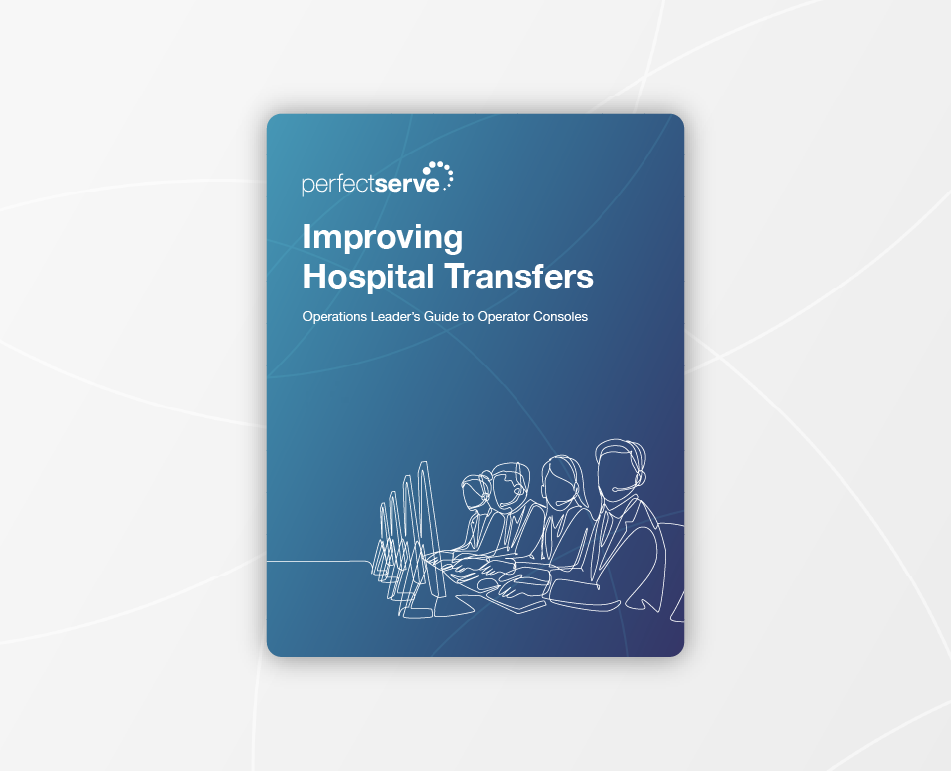Rapid Critical Result Reporting With Clinical Communication Technology
TABLE OF CONTENTS
Delayed Lab Results: An Example Sepsis Story
Imagine this scenario: A 62-year-old man arrives at the emergency department (ED) with a headache, nausea, and delirium. He has low blood pressure and says he feels like passing out. After viewing the patient’s record in the EHR, the nurse discovers he had an appendix removal surgery 3 weeks ago. After reviewing the patient’s blood work, the ED provider decides to keep the patient overnight for hydration.
Hours go by and the patient is having worsening confusion, breathing more rapidly, and says he has sharp, growing pains in his right lower abdomen. Concerned for infection, the attending provider orders an abdominal x-ray, additional blood work, and broad-spectrum antibiotics. The nurse caring for this patient acknowledges the orders and waits for radiology to perform the x-ray and the phlebotomist to draw the labs before administering the antibiotics. Another hour goes by and suddenly, alarms start beeping as the patient’s heart rate drops significantly. The nurse rushes to his room, but the patient’s breathing and heart rate completely stop. She calls the code team, but they were unsuccessful in resuscitating the patient.
Following the code, the provider sits down to check the patient’s medical record. The provider notes a worsening WBC (white blood cell) count, low platelet count, and critically elevated lactic acid. The provider called the laboratory department and asked why the lab results were not called in a timely manner. The laboratory manager reported they did not know who the nurse was and could not get a hold of the charge nurse. The patient died of sepsis, but could have been treated faster with a critical response from the lab.
Medical Delays and Critical Response Times
Delays in communicating life-threatening lab or radiology results can lead to unnecessary patient transfers and longer lengths of stay. In contrast, rapid and accurate communication of critical lab and radiology test results lead to timely clinical interventions, improved treatment outcomes, and prevention of comorbidities.
The Joint Commission’s National Patient Safety Goal 02.03.01 requires that organizations report critical results of tests and diagnostic procedures on a timely basis,1 yet some teams struggle to measure compliance and meet their goals. Even with the increasing number of high-tech tools available to hospitals, it’s not always easy for inpatient and outpatient laboratories to optimize critical value reporting due to several challenges.
For example, delays related to intermediaries and unavailability can affect reporting times. One of the most challenging aspects in an outpatient setting is the volume of unanswered pages and forgotten callbacks from providers, despite the fact that nearly 90% walk around with smartphones in their pockets.2 Compliance issues also tend to result from faulty processes in which the provider that ordered the test is no longer on call—a complication which, in an inpatient setting, requires the nurse to track down the correct covering provider.
To ensure that messages are received by providers that can immediately act upon the information, intelligent systems must be employed. Integration with modern clinical communication and collaboration technology helps organizations ensure that test results are delivered immediately to the appropriate bedside nurse, ordering physician, and on-call provider. A comprehensive solution will escalate results within specific timeframes as the need arises, along with documenting all communication for auditing purposes.
Ensuring Timeliness and Accuracy in the Notification Process
Organizations face challenges with timely delivery of test results. Is the right person notified at the right time? First, the right recipient can be difficult to determine when dealing with an expansive care team and complicated on-call provider coverage. Then, delivery of results can be a challenge due to varying levels of EHR access and adoption, sometimes in addition to technical message transmission issues.
Finally, confirmation that the test results were received and action is being taken is needed to close the communication loop, but various factors can lead to a lack of response from the recipient, such as:
- An error in reaching a provider who is available to immediately act on the information (e.g. the correct on-call provider, covering physician, assigned nurse, or care team member).
- Sending a message via EHR to an affiliated provider who does not access the EHR outside the facility (and therefore does not see the message).
- A delay in message delivery because the recipient is beyond the reach of the hospital’s Wi-Fi and/or cellular coverage.
- Alarm fatigue and/or confusion caused by a multitude of alert sounds that bombard clinical staff throughout their day.
The right CC&C technology can be very effective for automating protocols like those related to critical result notification to bypass various obstacles.
3 Keys to Success With Your Critical Result Communication Program
1. Guarantee that the correct care team receives the alert.
Your clinical collaboration solution should offer the ability to customize which care team members are notified of which clinical findings. For example, a critical potassium alert might always go to the nurse and the provider, while a critical BUN only alerts the nurse. To inform message routing and ensure the correct team members receive the alert, the solution must rely on comprehensive electronic on-call schedules that incorporate service line, group, and personal coverage details. If multiple scheduling tools are used across the organization, they all must be integrated to inform accurate message delivery.
Additionally, your clinical collaboration technology should integrate with all care team systems that house patient assignments including the EHR, nurse call, ancillary department applications, etc. to ensure that the appropriate patient care team members are alerted to new clinical findings.
2. Ensure that physicians, nurses, and care team members can easily acknowledge, accept, and decline/escalate results.
The improved process will garner greater adoption if all recipients can easily respond to alerts by tapping a button (e.g. “Acknowledge,” “Accept,” or “Decline”/“Escalate”) or selecting a response from a dropdown menu (e.g. “I’m entering an order in the EHR now.”).
The workflow can be further streamlined if the clinical collaboration solution facilitates quick access to the EHR through a link within the result message. Tight application integration enables staff to seamlessly move between applications and functions to access patient context.
3. Build escalation protocols to transmit the critical result to the next-level provider if a response is not received within a certain timeframe.
If a physician, nurse, or care team member is either unavailable (e.g. in a sterile procedure) or inaccessible (e.g. offline; out of Wi-Fi range or cell coverage), the ideal solution will automatically escalate the message to the right person to ensure a timely response.
Consistency, a Sign of Success
As your new critical result reporting process reduces workload for staff by automatically delivering results to the correct recipient, an advanced clinical collaboration solution removes variability caused by the human element. A fully integrated solution will eliminate staff inconsistencies related to reaction times, follow-up with non-responsive individuals, and documentation of event notifications.
Evaluating the Timeliness of Reporting
The Joint Commission’s National Patient Safety Goal for communication of critical results and diagnostic procedures specifies the need to evaluate the timeliness of reporting. In the quest for continuous quality improvement, your clinical communications solution should provide real-time dashboards. This should include and display acknowledgment status for all critical results and rich reports with auditing capabilities for all critical value communications.
Timestamps and event logs allow organizations to set goals, measure performance against established criteria, identify patterns (e.g. day of the week, time of day), and most importantly, support accountability across providers and clinical staff.
“We measured our response time to critical lab alerts across 1,100 results and achieved a 42% improvement in acknowledgment times. The fastest alert read was two seconds, the fastest acknowledgment was 7 seconds, and the median acknowledgment time was one minute, 23 seconds. We’re extremely pleased with the role CC&C has played in our ability to monitor and manage critical result notifications.”
– Robyn Townsend, Assistant Director, Clinical Applications, Hospital for Special Surgery
If you’d like to explore how PerfectServe Clinical Collaboration can help improve your laboratory and diagnostic reporting processes, click below to request a call with a clinical communication specialist.
Resources:
- National Patient Safety Goals Effective January 2017: Laboratory Accreditation Program, The Joint Commission, 2017: jointcommission.org/assets/1/6/NPSG_Chapter_LAB_Jan2017.pdf
- The Dilemma Surrounding Critical Value Reporting: What Does it Take to Improve Communication? Malone, B., Clinical Laboratory News,2012: AACC.org/publications/cln/articles/2012/december/critical-value-reporting.aspx




